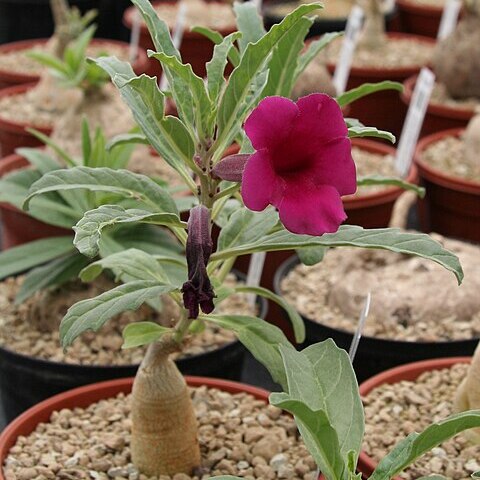Fruit indehiscent, laterally slightly compressed, with a 1-20 mm. broad longitudinal parchment-like wing on each of the four edges (sometimes rather inconspicuous); mesocarp spongy with large cavities, the thin endocarp sclerified and very tough; fruit oblate, circular, rotund or ovate in lateral view, often asymmetric, emarginate or apiculate at the apex, usually emarginate at the base; upper part of the fruit sterile and forming a distinct beak.
Small herbs, rarely more than 30 cm. high, with a persistent basal organ, consisting either of a short swollen aerial stem arising from a subterranean tuber of approximately the same diam., or a woody, not distinctly swollen stem (rarely two or three stems) arising from a napiform or pyriform subterranean tuber; several usually unbranched annual shoots produced from the top of the basal organ annually.
Corolla tube funnel-shaped or narrowly cylindrical and constricted in the lower part, often slightly gibbous at the base (reduced spur); limb spreading; lobes subequal or distinctly different in size, circular to oblate.
Leaves subsucculent, very variable in shape, linear to broadly oblong, entire, undulate, dentate, pinnatifid or pinnatipartite.
Ovary bilocular; loculi undivided; ovules 1-3, or (not in the Flora Zambesiaca area) 5-6 in each loculus, pendulous.
Flowers solitary in the leaf axils, yellow, brilliant orange, red or purple.
Seeds variable in both shape and structure of the testa.
Stamens 4, included in the tube; thecae divergent.
Calyx small, persistent.
